IN THIS GUIDE:
- Best Earring Materials for Sensitive Ears (Comparison)
- Why Earrings Can Irritate Your Skin
- What Does "Hypoallergenic" Really Mean?
- What Is the Most Hypoallergenic Metal for Earrings?
- Best Type of Earrings for Sensitive Ears
- Caring for Earrings That Are Gentle on Skin
If your earlobes flare up at the slightest touch of jewelry, you know the struggle. Nearly 20% of people report nickel‑related contact dermatitis, according to the American Academy of Dermatology¹. Irritation, itching and swelling can put a damper on your style, but you don’t have to give up your favorite looks. Read on to find earrings that deliver both comfort and sparkle.
Best Earring Materials for Sensitive Ears (Comparison)
Best Earring Materials for Sensitive Ears (Comparison)
| Metal | Hypoallergenic | Nickel Content | Durability | Tarnish Resistance | Price Range | Skin Safety |
|---|---|---|---|---|---|---|
| 14k Yellow Gold | Yes (High) | Usually none or very low | Good | Excellent | $$$ | Safe for most people |
| 14k White Gold | Moderate | Often contains nickel | High | Excellent | $$$ | May cause reaction if plating wears off |
| Platinum | Yes (Very High) | None | Very High | Excellent | $$$$ | Excellent for all skin |
| Titanium | Yes (Very High) | None | High | Excellent | $$ | Ideal for extremely sensitive ears |
| Surgical Stainless Steel | Moderate to High | Trace amounts | High | High | $ | Depends on grade; 316L or 316LVM is best |
| Sterling Silver (.925) | Medium | Usually nickel-free | Moderate | Low | $$ | Safe, but tarnish may cause irritation |
| Niobium | Yes (Very High) | None | Moderate | High | $$ | Excellent for allergies |
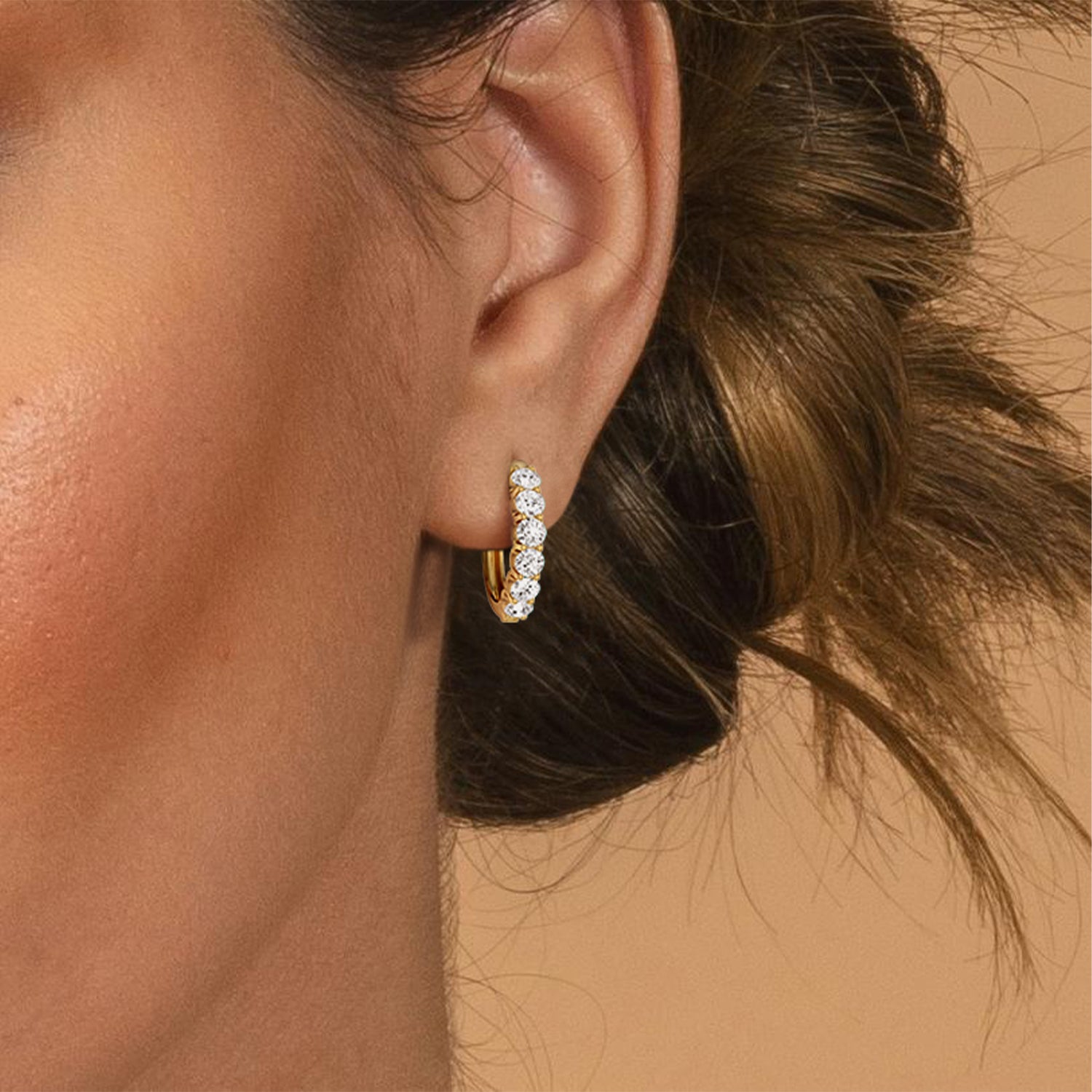
Why Earrings Can Irritate Your Skin
Most metal allergies stem from nickel, a common alloy ingredient in jewelry. When nickel ions mix with perspiration, they bind to skin proteins and trigger an immune response². Symptoms include:
- Red, itchy patches around the piercing
- Burning or tender sensation
- Dry, flaky skin near the earlobe
If these sound familiar, you need earrings made from metals designed to avoid allergic reactions.
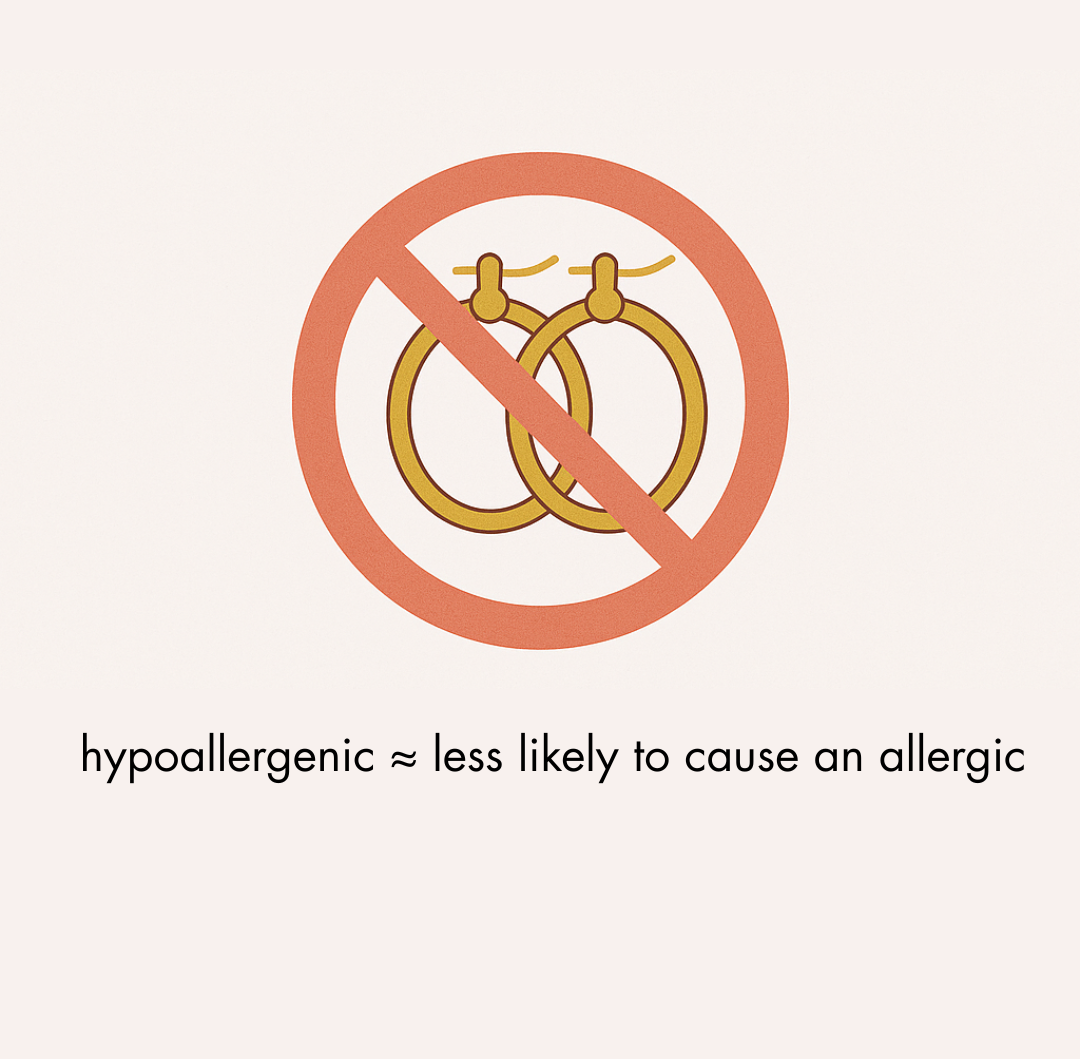
What Does "Hypoallergenic" Really Mean?
The label “hypoallergenic” implies a product is less likely to cause an allergic reaction. No governing body enforces its use in jewelry, so brands can apply it loosely. When buying jewelry, always look for clear alloy information or a nickel‑free guarantee.
Tip: Prioritize metals that are either pure or manufactured to medical standards.
What Is the Most Hypoallergenic Metal for Earrings?
When severe reactions occur, dermatologists recommend platinum or titanium. Both are bio‑inert and rated safest by allergy experts. Platinum rarely causes contact dermatitis, and titanium’s medical‑grade purity makes it ideal for new or sensitive piercings.
1. 14K Solid Gold
Solid 14 K gold contains at least 58.3 percent pure gold. Its alloys often include copper or silver rather than nickel. Yellow and rose gold mixes typically avoid nickel entirely, making them the best metal for earrings on a budget.
- Advantages: Durable, timeless, easy to clean
- Leonids Pick: Our 14K gold diamond stud earrings use recycled, nickel‑free alloy for guaranteed comfort.
2. 18K Solid Gold
With 75 percent gold content, 18K gold reduces alloy irritants further. It is softer than 14 K and requires more careful handling.
- Advantages: Higher purity, richer color
- Caution: More prone to scratches; avoid plated fashion pieces.
3. Platinum
Platinum is nearly pure (around 95 percent) and completely nickel‑free. Its density provides a satisfying weight without causing irritation.
- Advantages: Maximum hypoallergenic performance; never tarnishes
- Leonids Pick: Explore our platinum earrings for a secure, skin‑friendly fit.
4. Titanium and Niobium
These metals earn medical‑grade use in implants because they do not release ions into the body. Titanium offers exceptional strength with minimal weight. Niobium can be anodized for a range of skin‑safe colors.
- Advantages: Ultra hypoallergenic; creative color options
- Style Tip: Choose lightweight titanium threads or niobium adorned hoops.
5. Surgical Stainless Steel (316L/304L)
Not all steel is safe; look for “implant grade” or “surgical grade” labels. These alloys maintain strict corrosion resistance and nickel limits.
- Advantages: Affordable; durable; readily available
- Caution: Confirm the grade—avoid general “stainless steel” jewelry.
External Source: For details on nickel contact dermatitis, see the American Contact Dermatitis Society¹.
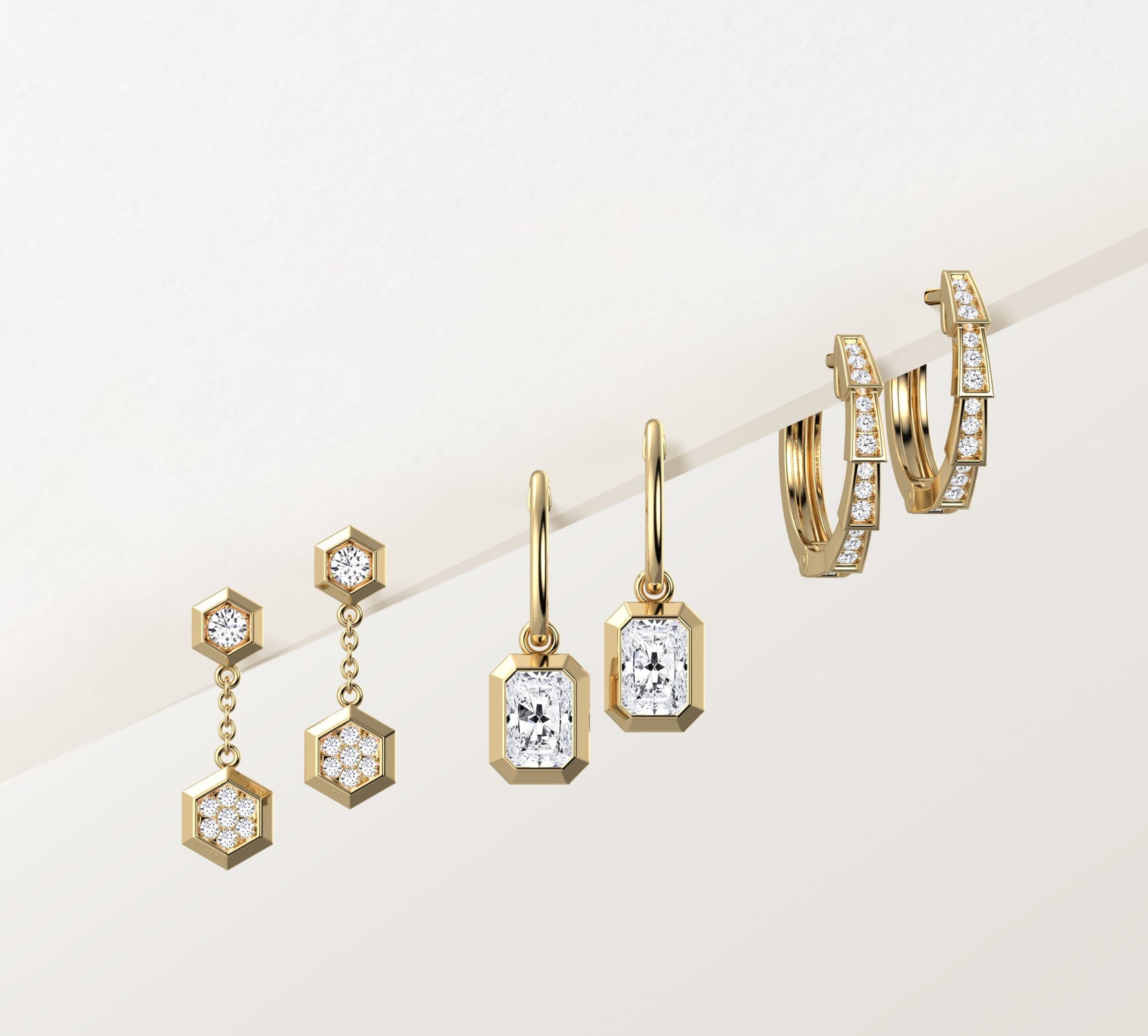
Best Type of Earrings for Sensitive Ears
Choosing the right style can reduce friction and prevent debris buildup.
1.Stud Earrings
Classic studs keep contact minimal. Our hypoallergenic diamond earrings feature lab‑created diamonds set in 14 K gold or platinum. They sit flush against your earlobe and are quick to clean.
- Leonids Pick: Lab-created diamond stud earrings in 14 K yellow gold
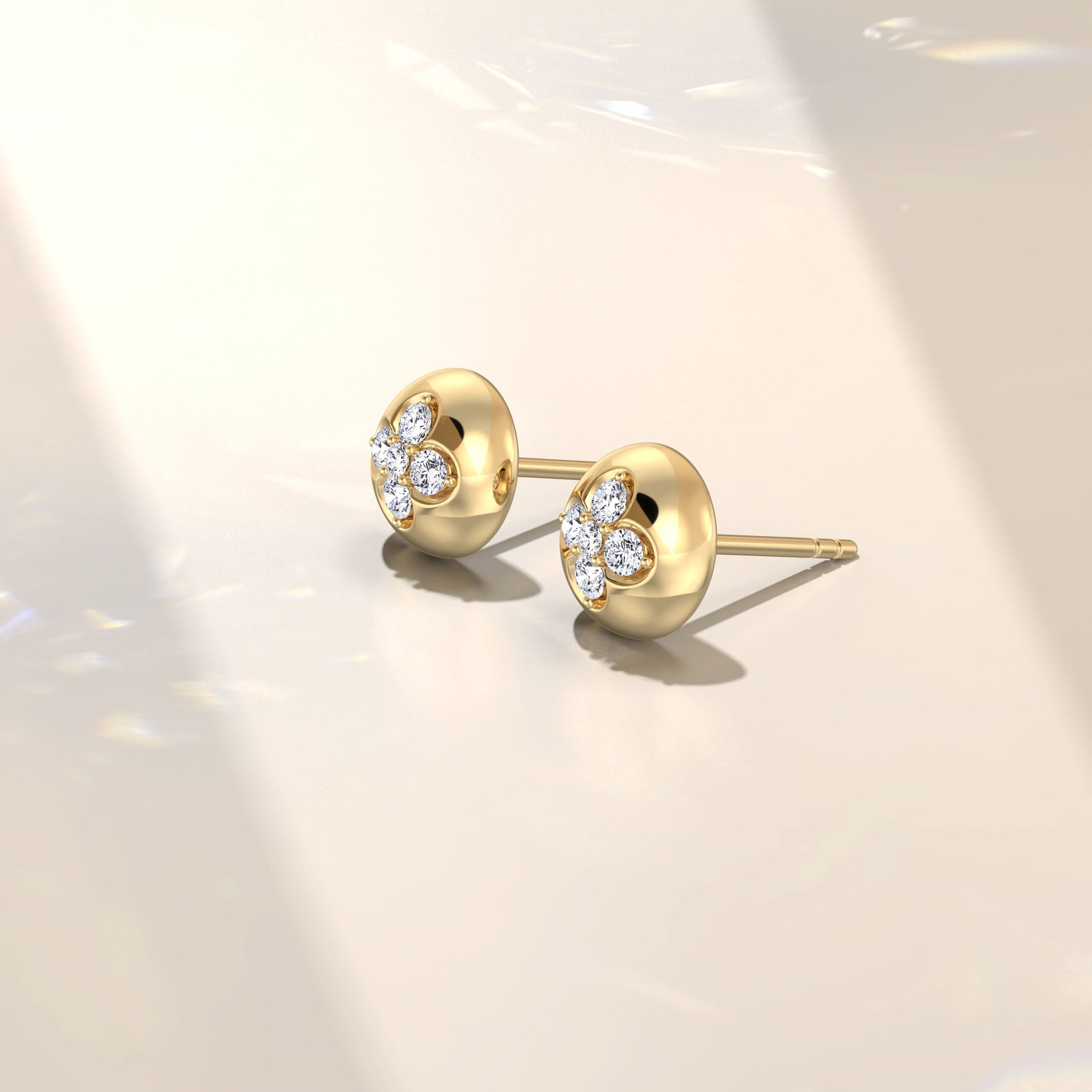
2.Huggie Hoops
These small hoops hug the earlobe to limit movement. A secure closure prevents accidental tugging or catch.
- Leonids Pick: Platinum huggie hoops under 10 mm diameter

3. Threader and Sleeper Styles
Threaders slide through the piercing, leaving no backing post to press against your skin. Sleeper earrings rest gently behind the ear, ideal for overnight wear.
- Advantages: Even weight distribution; minimal contact points4.
- Style Tip: Choose fine gauge wire under 0.8 mm for maximum comfort.
4. Screw‑Back and Flat‑Back Designs
Screw‑back earrings tighten against the lobe without pinching. Flat‑back earrings use a smooth disc instead of a traditional post, eliminating sharp edges or corners.
Best For: Fresh piercings or extremely sensitive skin.
5. Hypoallergenic Diamond Earrings
Hypoallergenic diamond earrings combine safe metals with some sustainable sparkle. Lab created diamond stud earrings replicate mined gems at a fraction of the cost and environmental impact. When set in nickel-free metals, they allow you to enjoy brilliance without compromise.
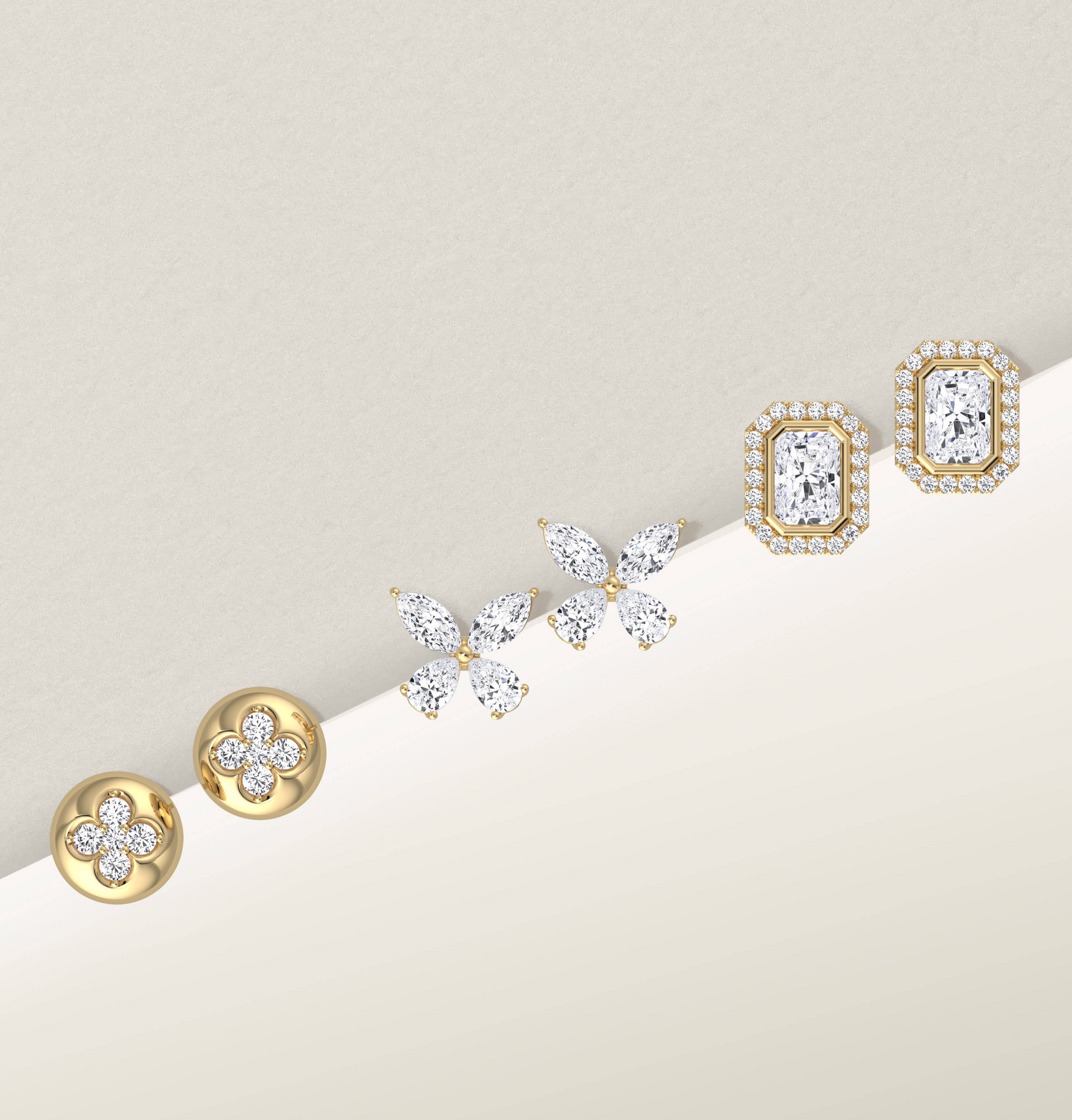
Caring for Earrings That Are Gentle on Skin
Proper maintenance keeps your hypoallergenic pieces performing at their best:
- Weekly Cleaning: Use mild soap and warm water. Rinse thoroughly.
- Brush Gently: Remove buildup from prongs or hoops with a soft toothbrush.
- Dry Completely: Moisture can trap bacteria and speed up corrosion.
- Store Separately: Keep each pair in its own anti‑tarnish pouch.
- Rhodium Touch‑Ups: If you wear white gold, plan a rhodium replating every 12–24 months.
For more detailed jewelry cleaning guide, you can check our caring guide here.
Resources:
¹ American Academy of Dermatology. Nickel Allergy. https://www.aad.org/public/diseases/eczema/insider/nickel-allergy
² NCBI Bookshelf. Nickel Contact Dermatitis. https://www.ncbi.nlm.nih.gov/books/NBK557638/
³ ASTM F138‑13 Standard Specification for Wrought Austenitic Stainless Steel Implant Materials
Author: Leonids Jewelry editorial team in collaboration with dermatologists.
Shop Earrings
FAQs
Yes, if they are made with nickel-free alloys. Pure gold (24K) is too soft, so jewelers blend it with other metals for durability. Confirm that your 14K gold jewelry lists copper, silver or zinc—never nickel.
White gold relies on rhodium plating for its silvery finish. Once that plating wears away, nickel-containing base metals may react with your skin. For reliable hypoallergenic performance, opt for 14K yellow gold or platinum over white gold.
Platinum and titanium are top choices. They carry zero nickel and rarely provoke reactions.
Studs, huggie hoops, threaders and flat‑backs made of nickel-free metals minimize contact and irritation.
Often yes. Unless labeled nickel-free, its base alloy may contain nickel once the rhodium coating wears.
Yes when set in nickel-free gold or platinum. Our diamond stud earrings use safe metals and lab-created diamonds.




